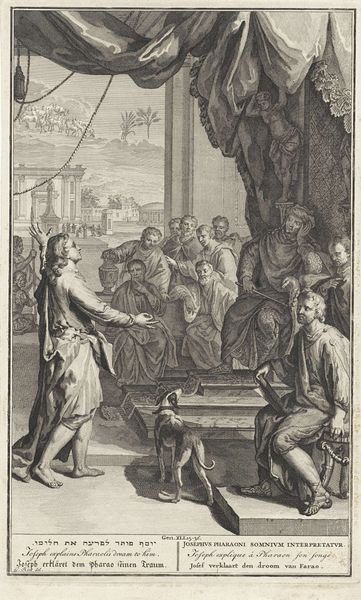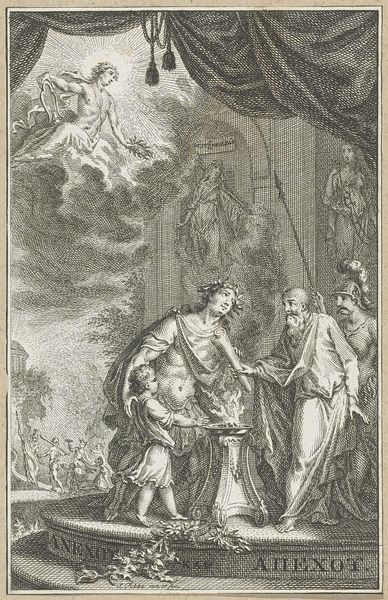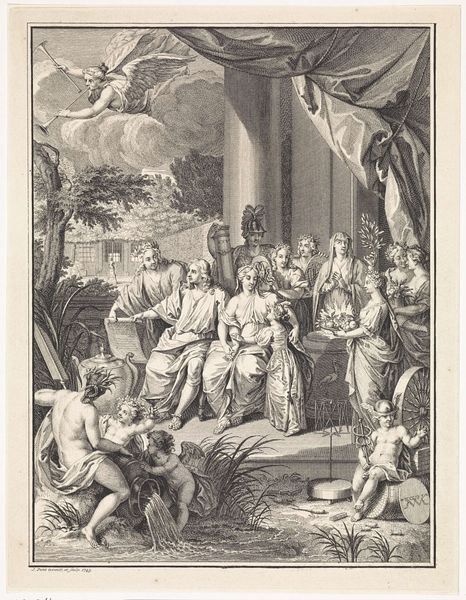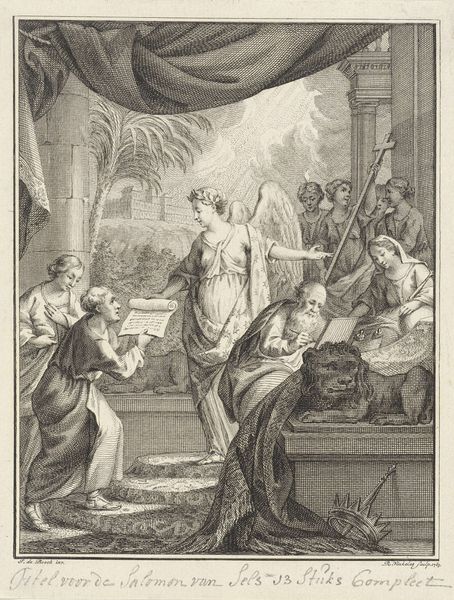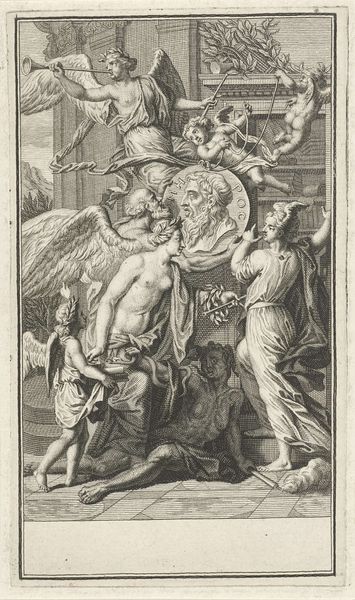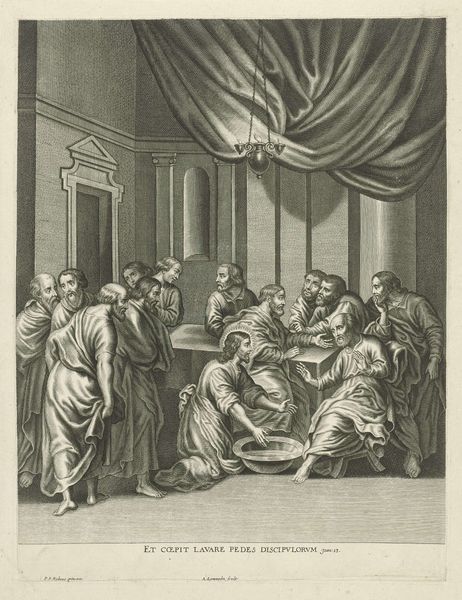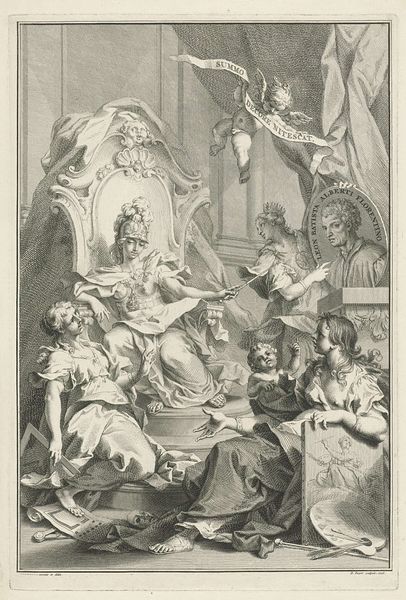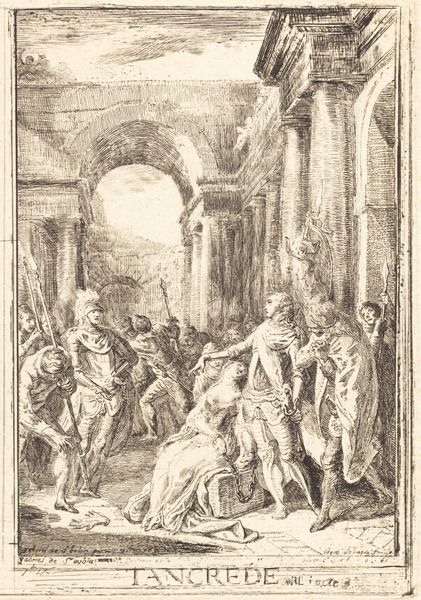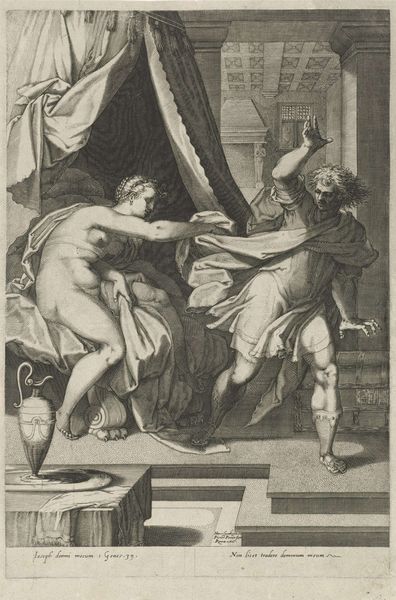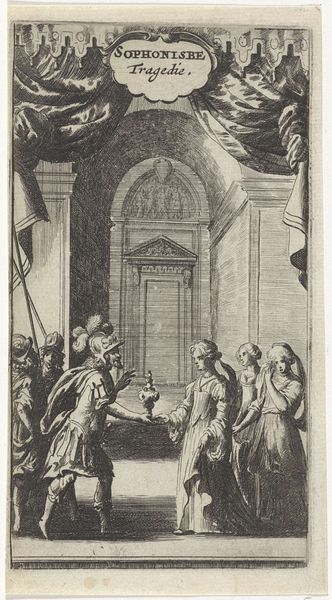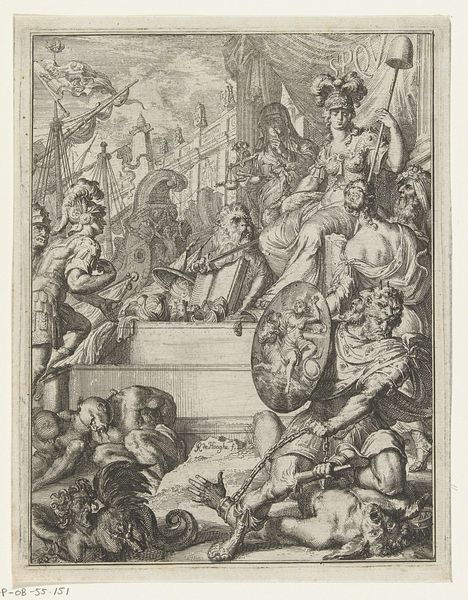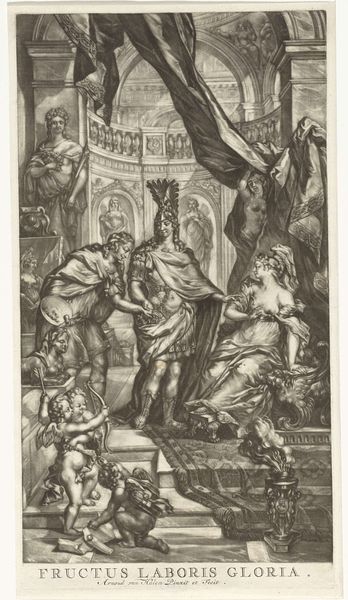
print, engraving
#
neoclacissism
#
allegory
# print
#
old engraving style
#
figuration
#
line
#
history-painting
#
engraving
Dimensions: height 327 mm, width 211 mm
Copyright: Rijks Museum: Open Domain
Daniël Veelwaard created this allegorical monument for Hendrik Danielsz. Hooft in 1794. The print gives us a glimpse into the cultural and social values of the time. This piece is steeped in symbolism, characteristic of memorial art in the 18th century. We see Father Time, an allegorical figure, accompanied by symbols of mortality and virtue. Death hovers over the scene with a scythe. The female figures embody concepts like grief and religion. They were often used to represent abstract qualities or ideals. What does it mean that the artist chose women to embody these qualities? The pyramid symbolizes eternity, while Hooft's portrait commemorates an individual life. These symbols invite us to reflect on the relationship between life, death, and enduring values. The inscription below emphasizes these themes, lamenting the loss of a friend and celebrating virtue. Memorials like these were not just about mourning; they reinforced moral and social teachings. They invite reflection on how we negotiate mortality, memory, and the values we leave behind.
Comments
No comments
Be the first to comment and join the conversation on the ultimate creative platform.
